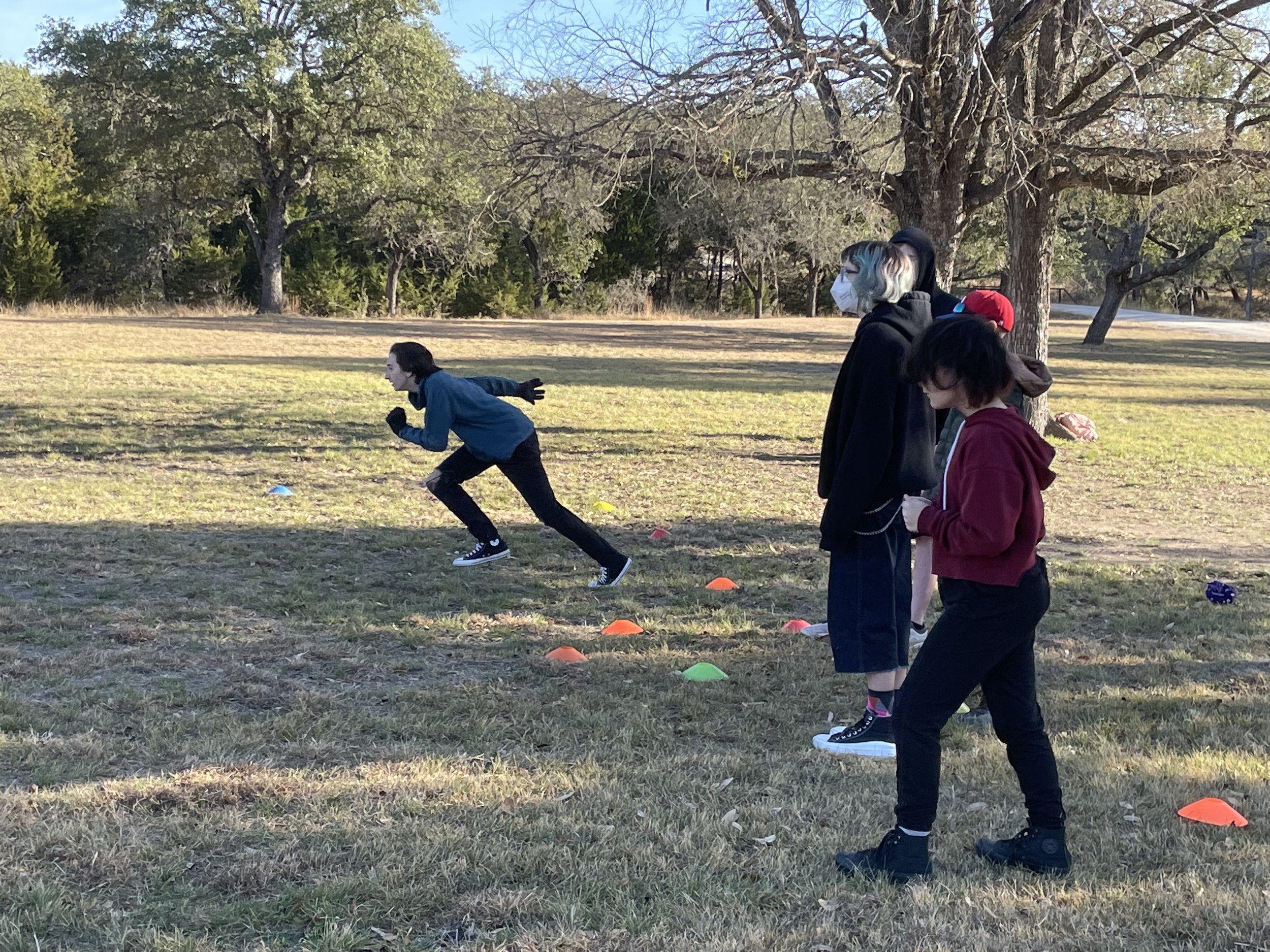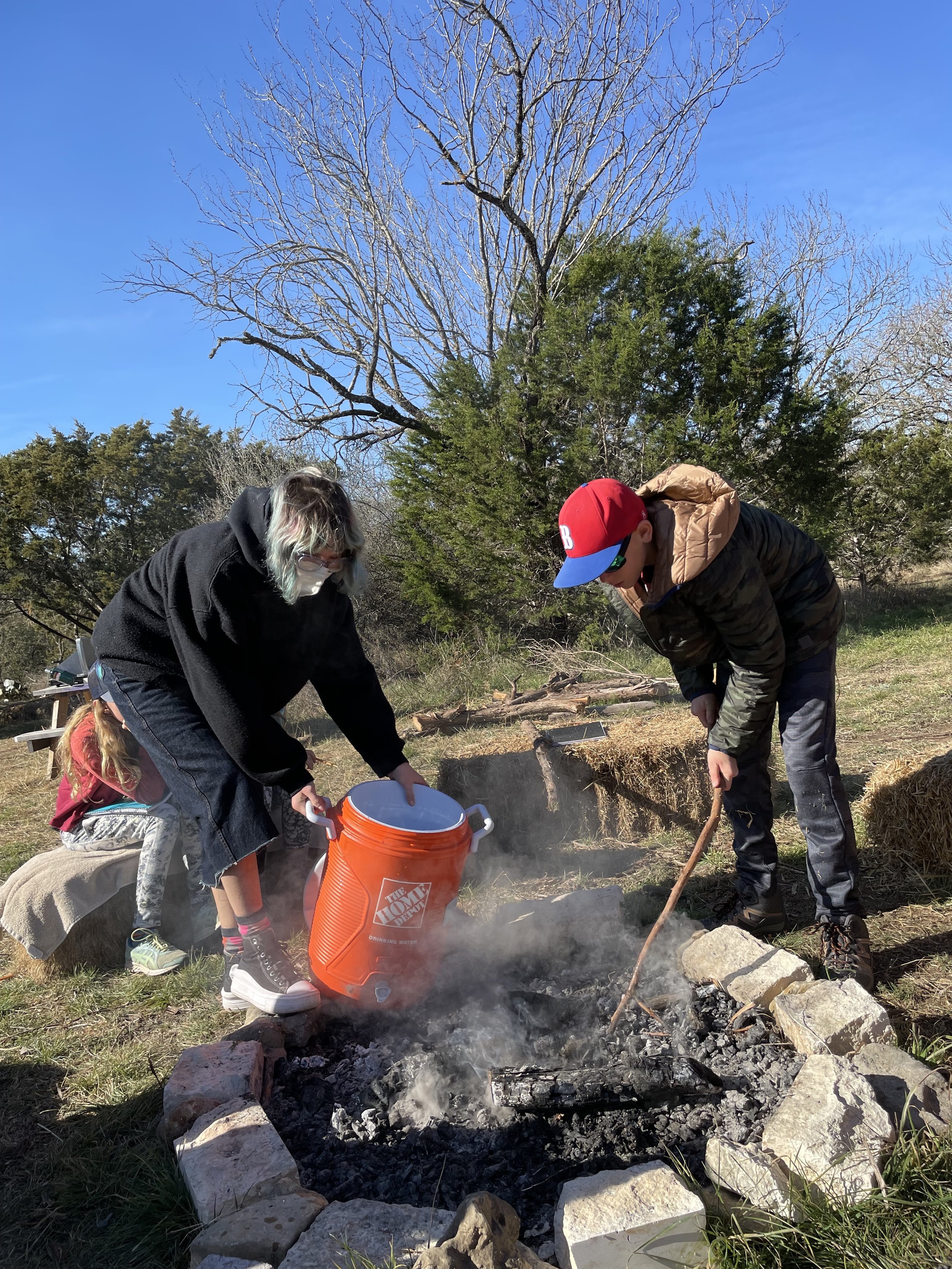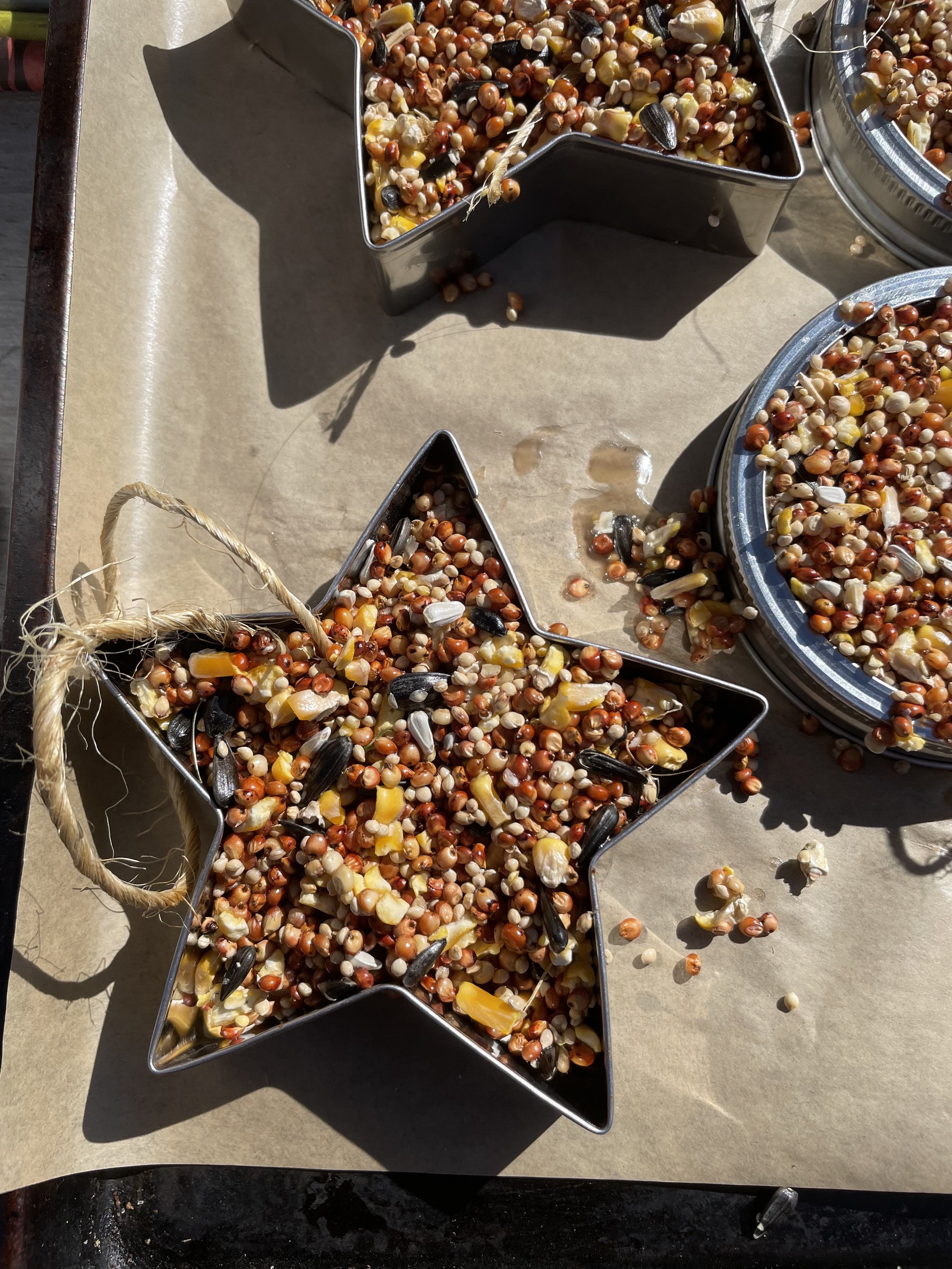Week 2 Update - Young Farmers
Hello Farm School Families,
The weather was much more pleasant this week - cold at the beginning of the morning, but things warmed up quickly. We still managed to get some fire starting practice in. The students really enjoy practicing making sparks with the ferro rods, which can be quite dramatic, as Teague is demonstrating here. The challenge is to get the sparks to land on our tinder piles without knocking everything down!
They were then asked to find their perfect “sit spot” which is a place in nature where they can sit quietly to observe (and journal about) the sights, smells and sounds around us. From this week onward, we will each spend time in the same place for about 15 minutes. Today we focused on the sounds of the birds: How many different birds do you hear? What sounds are they making? What do you think they are communicating with each other?
When we regrouped around the fire, we discussed the five main bird “voices” and what they tell us:
1) Bird Song - most often heard early morning and spring time. Singing birds tell us that they feel extremely comfortable, and males often advertise themselves to the females or stake out their territory.
2) Companion Calls - pairs of feeding birds keeping in contact with each other as they rummage around for food. Typically make short chirps and chips in a regular back and forth rhythm. “I’m here. You OK?” “Yup, I’m over here. All good.”
3) Juvenile Begging - babies and younger juvenile birds beg their parents for food, often in incessant, agitated, wheezing voices.
4) Male-to-Male Aggression - two males fighting over territory with a lot of squawking and flapping. No one really gets injured - it’s just a lot of testosterone putting on a show. Other birds nearby show no interest.
5) Alarm Calls - A bird perceives a threat and sounds an alarm which alerts all the other birds and mammal species in the vicinity. Those who don’t listen usually end up being eaten by the owl, fox, coyote, or weasel. When you hear an alarm, watch what happens next. Sometimes everyone hides and goes silent. There may be one brave sentinel in a tree pointing out with its beak and voice “They’re over here, look look!”
We’ll continue opening up our awareness to the birds around our outdoor classroom as they transmit over our “Natural Public Radio,” as Mr. Braden calls it.
After snack we went on to our farm chores, which included recording the weather at our weather station (clear skies with some cirrus clouds, temps in the mid sixties, minimum temp overnight was 30 degrees, light wind coming from the northwest.) Next, we decanted some compost tea from the brewer and sprinkled it on the soil around some newly transplanted lettuce and turnip seedlings. Compost tea is a blend of compost, molasses, fish emulsion and water that has been oxygenated in a large barrel using a pump. The “brewing” process ensures that the microbes that are produced are the healthy aerobic (oxygen-loving) varieties. This will give our seedlings an extra immune boost to protect them from the challenging weather we’re experiencing right now. They hear me say this all the time: “Feed the soil, so the soil feeds the plants, so the plants can feed us!”
We lost many of our new lavender seedlings from the recent cold, so we propagated more by taking cuttings from the healthy survivors, removing the lower leaves, then planting them in 4-inch pots containing moist potting soil. Once the leaf nodes make contact with the soil, they will convert into root nodes, and hopefully take root in a few weeks. We’ll keep them warm and safe in the greenhouse until planting time in the spring.
We then made our way back to the classroom for two more bird challenges, which come from the awesome program at the Cornell School of Ornithology. The first was “Bird Knowledge True and False” to test our avian literacy (e.g. Are birds the only living animals with feathers?) We had to run back and forth as we decided which statements were true / false. (It was also an interesting experiment on the power of peer pressure!)
The second game was Bird Bingo where students teamed up to observe different wild bird behaviors around the farm. See the photo of one of our game cards above. (Sorry - chickens don’t count!) Everyone got at least one bingo, and one team even filled up their card!
After lunch, we made up some gelatin bird seed ornaments which we’ll hang up at the beginning of class next week. This will give us the opportunity to observe and name some of our local species. We finished up the day with two more games: BIrd Survival, where pairs of nesting White-crowned Sparrows attempt to build nests and gather food while evading egg-stealing Blue Jays and sparrow-eating Sharp-shinned Hawks; and Eagle Eye, a variation on hide and seek in which Field Mice hide from an Eagle standing in its nest. The challenge is that the mice must be able to keep at least one eye on the Eagle at all times. Both of these games come from the Nature School tradition and are amazing for helping students really relate to local ecosystems and the strategies that some species undertake to survive in the wild, while becoming more comfortable in nature themselves (sometimes unwittingly!)
More adventures next Friday…
Have a great week,
Ms. Bridget









